Bed Bug vs. Flea Bites
If you've seen a group of tiny, itching, red spots on your skin, it might really be a plethora of things. The worst likely causes might be from a bed bug or flea bites, as it means there are bugs in your house that you need to eliminate.
It may be even more frustrating not to know exactly where your sting came from, as you probably want to care for the problem if possible. Fortunately, we have rounded up several tips and techniques that will help you distinguish the two and how to eliminate them for good.
There are some basic similarities between these bites so that you can tell you really do have bug bites and not something else such as chickenpox or hand, foot, and mouth disease (Google with caution).
If you've flea, the tiny red dots will be seen in specific regions instead of all over the body. They will also be easy red bumps with no fluid or pus in them, but they can bleed with extreme scratching.
In either case, we have rounded up several tips and techniques to help you distinguish flea bites vs. bed bug bites two and how to eliminate them for good. Continue reading to learn the difference between bed bugs and flea bites, including the tell-tale signs of each type of bite.
Main Differences Between Flea vs. Bed Bug Bites?
Fleas really prefer animal blood to human blood, but they will drink either. Bed bugs almost only swallow human blood. But that's only one difference between bed bug bites and flea bites on people.
More About Flea Bites
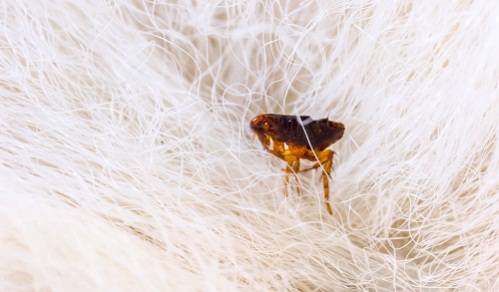
The majority of the time, we get fleas from our pets. Luckily, fleas cannot fly, but they could jump up to 18 centimeters. After they land on a server, they start biting.
If you are likely to be infectious to flea bites (fleas’ spit can be quite antigenic), the bitten area can be more damaging with hives or blistering and swelling. This may cause damaged skin and infections, so it is important to properly take care of your bites to prevent additional issues.
Even though fleas usually aim at our furry friends rather than us, be very careful because they can spread infection and can damage your skin. If your pet sleeps with you and leaves fleas in bed, then it may become somewhat trickier to ascertain whether you have been bitten by a flea or bedbug.
Burrowing fleas can lead to tungiasis, a skin disease where the flea digs into your skin to consume your blood. It usually happens around the feet and toes. The flea dies in a couple of weeks, but it could still lead to skin infections and complications.
To prevent flea bites on people, take these steps: make sure your pet gets proper flea medicine, and consider limiting their outside access during flea season (summer months).
Also, be sure that you vacuum rugs and wash your pet's bedding regularly, in addition to brushing and cleaning your beloved pet. Fleas even hate garlic, so try to eat high levels of it.
Other Indication of Fleas
One way to identify where your sting (s) came from is to keep an eye out for other signs of this bug. If a number of the other indicators are there, there is a fairly good chance you found your culprit. Like we mentioned earlier, people usually contract fleas from animals like house pets, and there are a couple of clues to look out for to find out if your pet has them.
- Excessive biting or scratching – If you become aware of your animal biting or scratching themselves more frequently than normal or erratically, it could be a sign they are suffering from flea bites.
- Red patches on the skin –Many critters can be allergic to the flea's saliva, creating irritation and red patches on their skin. They can appear anywhere on the pet's body, not just where they had been bitten.
- Hair Loss –This may be a sign that your animal is having a bad reaction to flea bites, or it might be from excessive barking and scratching from a flea bite.
Suppose your animal is experiencing a combination of these signs, and you have bites that seem like our earlier description. In that case, you may want to speak with a physician or look into various treatments.
How to Treat Flea Bites

When you've determined that your red dots are, in actuality, flea bites, it is time to take care of them. First, ensure you wash the region frequently with soap and water to keep sanitation. Treatment can include an oral antihistamine such as Benadryl to decrease any itching or swelling.
Next, you should find any soothing, antipruritic (anti-itch) lotion to help with the itching, ensuring you don't get a subsequent bacterial infection. Third, visit your physician for a topical steroid to use to reduce inflammation. If your bites remain or get worse, go to your doctor for an antibiotic.
Some more natural treatment options include Aloe Vera for itchiness and redness or washing the bitten area with green or black tea, which will help it heal.
You'll probably want to take additional safety precautions to be sure that your property is flea-free. We propose you sweep and mop your floors, spray on your carpets and upholstery, and even for your home. A fogger tackles fleas' life stages because the treatment can be effective for up to 7 weeks, and it is pretty affordable too.
More About Bed Bug Bites
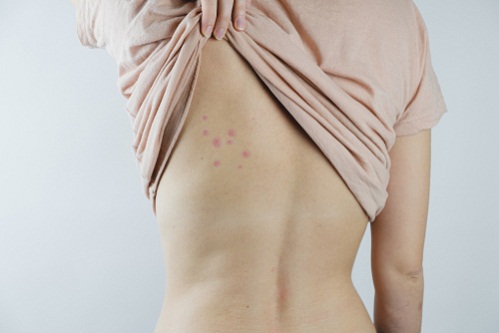
Bed bugs are little, oval-shaped, and reddish-brown bugs that like to live in your mattress and furniture and bite you while sleeping. They are attracted to body heat and carbon dioxide. Do not worry. They want to feed on you over your pets.
And unlike ticks and fleas, bed bugs do not carry any diseases, but it's still possible to experience swelling or hives in their bites, just like flea bites. Bed bugs are usually found in heavily populated areas like hospitals, hotels, and apartment complexes.
The bed bug's main type of transport is simply crawling. However, they can crawl into your bag, clothes and even migrate through holes in the walls, water pipes, and gutters.
The majority of the time, you won't ever feel that a bed bug is biting you because their spit numbs your skin before they strike. But some people report that they had a disturbed sleep after sleeping on an infested bed.
In case you have bed bug bites, do not scratch them. They will usually heal up within a week or so. If you scratch or irritate them, the snacks can stay on your skin for up to several weeks afterward.
To prevent bed bugs, ensure you're assessing your mattress and furniture regularly for a rust color or mini red-brown dots (the first sign of bed bugs), or wrap your mattress in a protective casing.
Be certain that you inspect your luggage and clothes when traveling and keep them in airtight packaging while on airplanes, trains, and buses. Vacuum regularly and clean your bedding hot, also. Bed bugs cannot survive in high temperatures.
Other Evidence of Bed Bugs
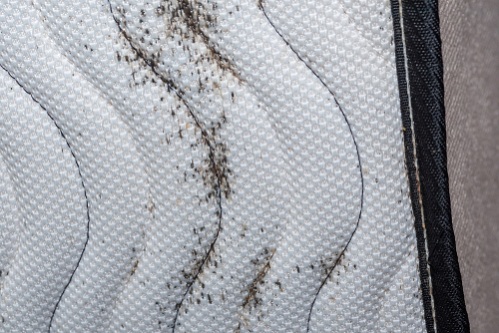
Bed bugs are sneaky and frequently come out at night while you're sleeping. But they do leave a few recognizable traces you can search for.
- Red/Brown Stains – Those rust color dots, we advised you to keep an eye out for are traces of blood (probably your blood) from bed bugs being popped. If you see them in your mattress, clothing, sheets, or furniture, there is a great chance your bite came out of a bed bug.
- Scaly Skins – Bed bugs cast their skin as they become old, and it almost looks like a tiny transparent leaf – a 2.5 mm, scaly leaf. So, in the case you have bites you suspect are out-of-bed bugs, keep your eyes peeled for them in your own mattress.
- Musty Odor – If your home is also the home to many bed bugs, you may notice an unusual odor is coming from their sweat glands. It is musty and slightly resembles the smell of if you walk into a stuffy old property.
How to Treat Bed Bug Bites
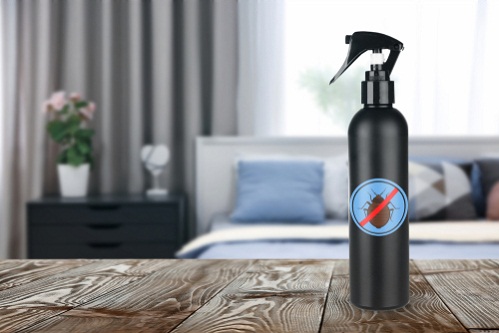
Let us Repeat. Bed bug bites become worse if you scratch them. Fixing bed bug bites is very similar to the way you deal with flea bites. Use an oral antihistamine or use a topical anti-itch lotion to help fight itchiness and swelling.
From there, you will have to contact your physician for a topical steroid. Speak to your doctor again if the snacks have not gone away after about two weeks (that is after you are confident that you've eradicated them from your house), or you develop a secondary infection. Your physician may need to prescribe an antibiotic.
If you want to have a more holistic approach to your home, combine baking soda and water to make a paste. Use it directly on the bite, and then rinse it off an hour after.
Removing them from your house is easier said than done, and sadly may wind up being a bit pricey. That is why it's important to look after it earlier rather than later before they have the opportunity to multiply.
Look through testimonials of local terminators in your region, and find somebody who'll be thorough enough to spray the tiny nooks and crannies in your dwelling. It's far more difficult to eliminate them without a professional's support, but if that is not feasible for you, spraying alcohol kills bed bugs immediately.
Fill out a small spray bottle with it, and spray areas of your house or right on a bed bug if you find one. Your home may smell a little like cleaning supplies, though it sure beats losing sleep as you've got bed bugs at the back of your mind.
It's also important to treat the remainder of your house, so spray rubbing alcohol at the small crevasses of your house, and take your laundry to a laundromat where you will need to wash/dry your clothes on high.
How to Clean Your Mattress Should You've Bed Bugs or Fleas.
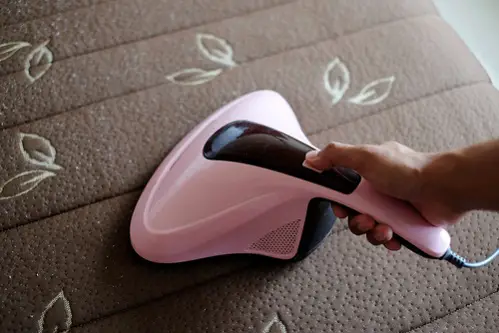
If you've seen either of these pests in your bedroom, you will want to completely clean your mattress before using it again. Following is a brief summary of what to do if you end up in this unfortunate situation.
- Strip off all bed, mattress covers, and neighboring linens or clothing. Wash them all with warm water and then dry them on a high heat setting.
- Scrub the seams of your mattress using a stiff, rough brush. Make sure to get into small cracks and utilize an aggressive cleaning movement to eliminate any lingering bedbugs and their eggs.
- Vacuum your carpet, mattress, and under your bed. As soon as you've done, throw your vacuum bag off immediately in an outside trash can. You also need to leave your vacuum out until you can correctly clean it.
- Put your mattress in a bag. Bed bugs can persist for a year when fed, so keep the cover for at least 12 months.
- Avoid future infestations by keeping the region around your bed clutter-free. Repair any cracks in your bed frame or walls to provide pests fewer places to hide.
Final Thoughts
At first Glimpse, flea vs. bed insect bites may appear quite similar. However, as you have learned in this report, there are a few noteworthy differences between the two, which can help you determine which type of pest you're dealing with.
In any case, you should act quickly once you notice fleas or bed bugs in bed. As an initial step, follow the cleaning directions we have included above. From there, you can decide if you'd like to employ expert help for your Flea or bedbug issue.
Affiliate Disclosure
Affiliate Disclosure: I may earn a small commission (at no cost to you) if you purchase a mattress after clicking a referral link or using a coupon code on this site. That said, all content and opinions on this site are my own and are NOT affected by these payments.
This site participates in the Amazon Services LLC Associates Program, an affiliate advertising program designed to provide a means for sites to earn advertising fees by advertising and linking to Amazon.com.
*Amazon and the Amazon logo are trademarks of Amazon.com, Inc, or its affiliates.

